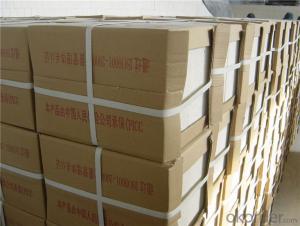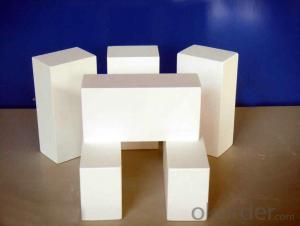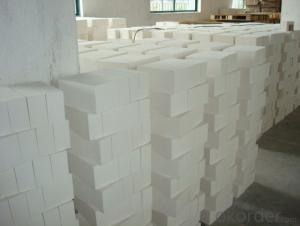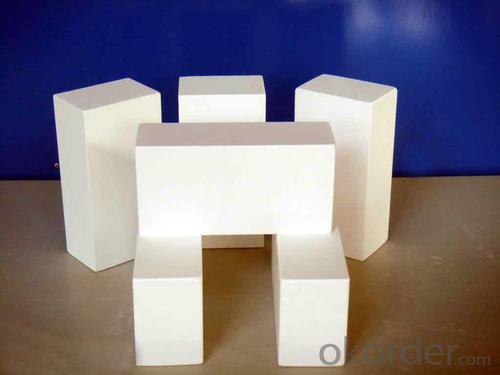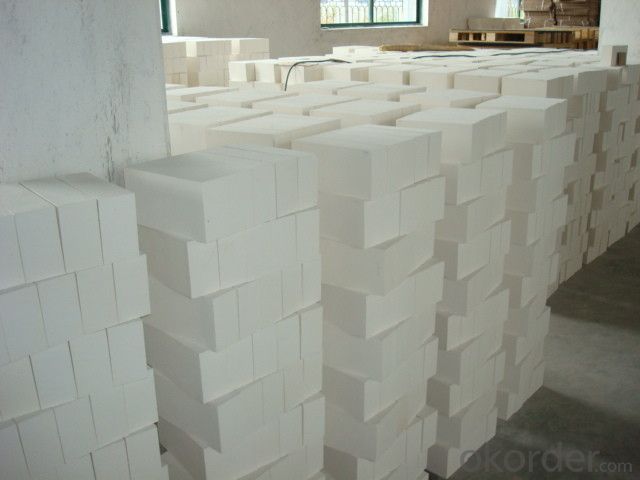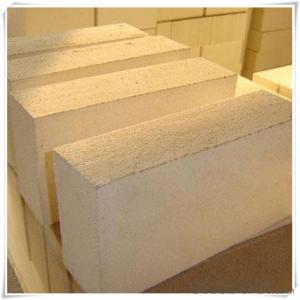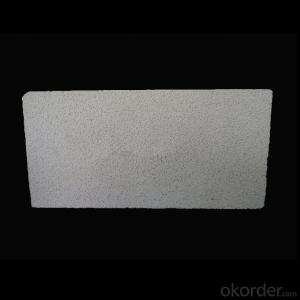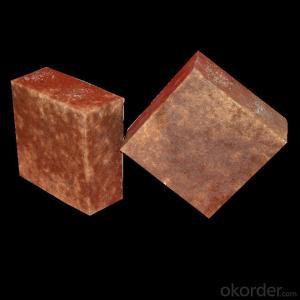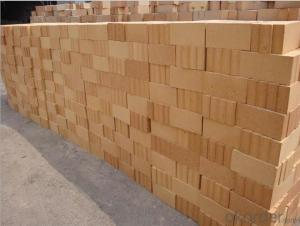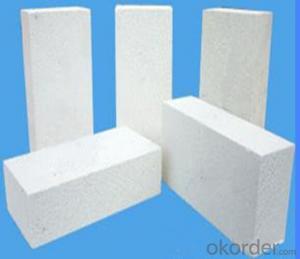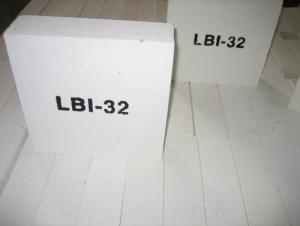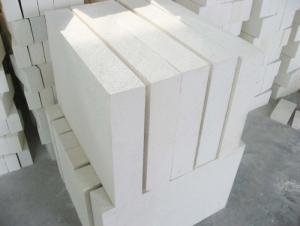JM Series JM23 JM26 JM28 JM30 Thermal Light Weight Mullite Insulating Refractory Bricks
- Loading Port:
- Tianjin
- Payment Terms:
- TT OR LC
- Min Order Qty:
- 1 m.t.
- Supply Capability:
- 1000 m.t./month
OKorder Service Pledge
OKorder Financial Service
You Might Also Like
Bubble Alumina Brick and Insulating Firebrick are high temperature refractory brick, max temp 1800 deg C, used in furnace kiln.
Bubble Alumina Brick and Insulating Firebrick are high temperature refractory brick.
Bubble Alumina Brick. We stock in both 2.5 & 3” sizes. We also carry double bump interlocking anchor styles. For use up to 1800C, these brick have excellent insulating properties as well as high hot strengths.
Insulating firebrick, we carry produces thirteen types of Insulating Fire Brick for use in applications from 2,000°F (1,093°C) to 3,200°F (1,760°C). Each type is formulated to meet specific thermal and physical requirements and after firing is machined to precise tolerances.
Made from high purity refractory clays and other ceramic raw materials, these insulating fire brick contain a carefully graded organic filler which is burned out during manufacture to give a uniform controlled pore structure.
Strong
The high compressive strength of bubble alumina brick allows for self-supporting structures at elevated temperatures. Insulating fire brick are compatible with dense fire brick and add strength to the whole construction.
Low Heat Storage
Lower heat storage versus dense brick means reduced fuel costs in cyclically operated heating equipment.
Application
DJM 26 Light Weight Insulating fire brick are used for the lining of converter, alternating current arc furnace, direct Current arc furnace and the ladle slag line, etc.
Company Advantage
(1)Long Insulating Fire Brick manufacture history: 25 years manufacturer
(2)Advanced equipment
(3)Diversification of production standards: ISO ANSI FEPA JIS ASTM
Equipment
1 unit of Ceramic Abrasive (SG Abrasive) pilot production line
1 unit of high-end coated abrasives (abrasive cloth) production line
2 units of Boron Carbide production lines
Q1 What’s the transport method?
A1 FCL delivery goods with wooden pallet or wooden case by sea; If LCL delivery, must with wooden case; Sometimes need open top, flat rack or bulk cargo.
Q2 What’s the required payment term?
A2 Generally 30% TT as the prepayment, 70% TT before delivery. If need, 100% Irrevocable Letter of Credit or negotiation.
Q3 Which country are our products exported to?
A3 Apart from entire Chinese market, the US, Russia, Japan, Korea, Australia and some Southeast Asian Nations.
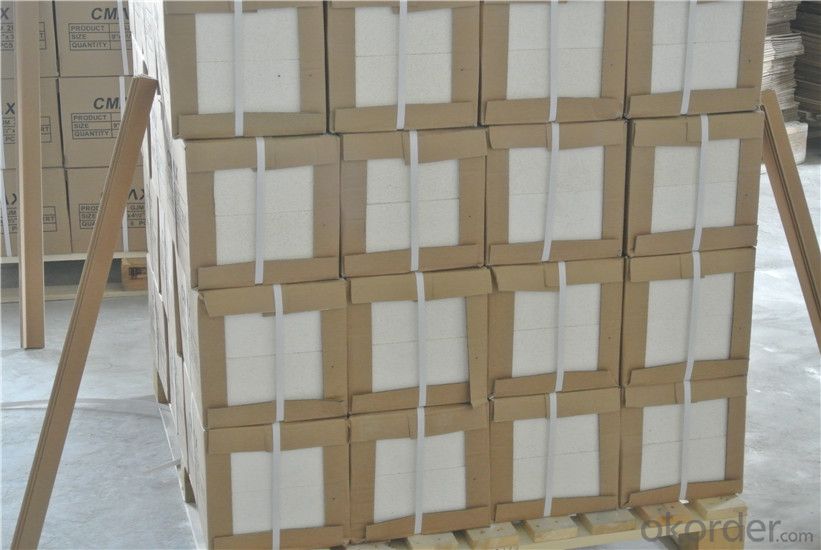
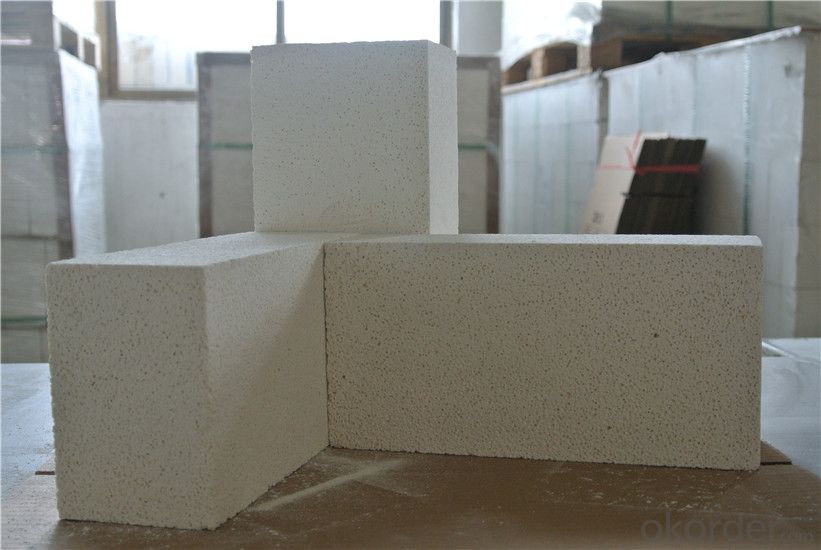
- Q: Are insulating fire bricks easy to cut or shape?
- Insulating fire bricks are relatively easy to cut or shape compared to other types of bricks. This is primarily due to their lower density and composition, which allows them to be more easily manipulated with standard masonry tools. However, it is important to note that the level of ease may vary depending on the specific type and brand of insulating fire brick. Some may require special tools or techniques for cutting or shaping, while others may be more user-friendly. It is always recommended to consult the manufacturer's instructions or seek professional advice when working with insulating fire bricks to ensure proper cutting or shaping techniques are employed.
- Q: Can insulating fire bricks be used in the construction of smelter crucibles?
- Yes, insulating fire bricks can be used in the construction of smelter crucibles. These bricks are designed to withstand high temperatures and provide excellent insulation, making them suitable for use in smelting applications. They help to retain heat and minimize heat loss, ensuring efficient and effective smelting processes.
- Q: Do insulating fire bricks have a low coefficient of thermal expansion?
- Yes, insulating fire bricks have a low coefficient of thermal expansion. This means that they expand and contract very little when exposed to high temperatures. Insulating fire bricks are specifically designed to withstand extreme heat and maintain their structural integrity. Their low coefficient of thermal expansion helps them to resist cracking or breaking due to thermal stress. This property makes them ideal for applications such as insulation in furnaces, kilns, and other high-temperature environments where thermal stability is crucial.
- Q: Material and making method of light insulating brick
- Material production of ordinary light insulating brick clay, high alumina high strength low iron bead brick, mullite, high aluminum light insulating refractory brick, diatomite insulating refractory brick.
- Q: Can insulating fire bricks be used in residential fireplaces?
- Yes, insulating fire bricks can be used in residential fireplaces. Insulating fire bricks are designed to withstand high temperatures and provide excellent insulation, making them a suitable choice for fireplace construction. These bricks can help retain heat, increase energy efficiency, and prevent heat loss. They also offer superior protection against thermal shock, which is essential for withstanding the intense heat generated by a fireplace. Additionally, insulating fire bricks are lightweight, easy to handle, and can be easily shaped or cut to fit any fireplace design or size. Overall, using insulating fire bricks in residential fireplaces is a wise choice for homeowners looking to enhance the performance and safety of their fireplace.
- Q: Can insulating fire bricks be used in biomass boilers?
- Yes, insulating fire bricks can be used in biomass boilers. Insulating fire bricks are designed to have low thermal conductivity, which helps to retain heat within the boiler and increase its overall efficiency. In biomass boilers, these bricks can be used to line the combustion chamber, helping to keep the heat inside and prevent it from escaping. Additionally, insulating fire bricks can withstand high temperatures, making them suitable for use in biomass boilers where combustion temperatures can reach several hundred degrees Celsius. Overall, the use of insulating fire bricks in biomass boilers can enhance their thermal efficiency and contribute to a more efficient and sustainable energy production process.
- Q: Can insulating fire bricks be used for insulation in power plants?
- Yes, insulating fire bricks can be used for insulation in power plants. These bricks are specially designed to withstand high temperatures and provide excellent thermal insulation. They help in reducing heat loss and improving energy efficiency in various industrial applications, including power plants.
- Q: What is the maximum temperature range of high temperature resistant insulation materials?
- A class of inorganic non-metallic materials with a refractoriness of not less than 1580 degrees. Refractoriness is defined as the temperature of a sample of a refractory cone sample that resists high temperature without loading and does not soften and melt down. But only in terms of fire resistance can not be fully described refractories, 1580 degrees of temperature is not absolute.
- Q: Do insulating fire bricks emit any toxic fumes when heated?
- No, insulating fire bricks do not emit any toxic fumes when heated. They are designed to withstand high temperatures without releasing any harmful gases or substances.
- Q: Can insulating fire bricks be used for insulation in steam boilers?
- Yes, insulating fire bricks can be used for insulation in steam boilers. These bricks are specifically designed to withstand high temperatures and provide excellent thermal insulation properties. They help to reduce heat loss and improve the overall energy efficiency of the steam boiler system.
Send your message to us
JM Series JM23 JM26 JM28 JM30 Thermal Light Weight Mullite Insulating Refractory Bricks
- Loading Port:
- Tianjin
- Payment Terms:
- TT OR LC
- Min Order Qty:
- 1 m.t.
- Supply Capability:
- 1000 m.t./month
OKorder Service Pledge
OKorder Financial Service
Similar products
Hot products
Hot Searches
Related keywords
